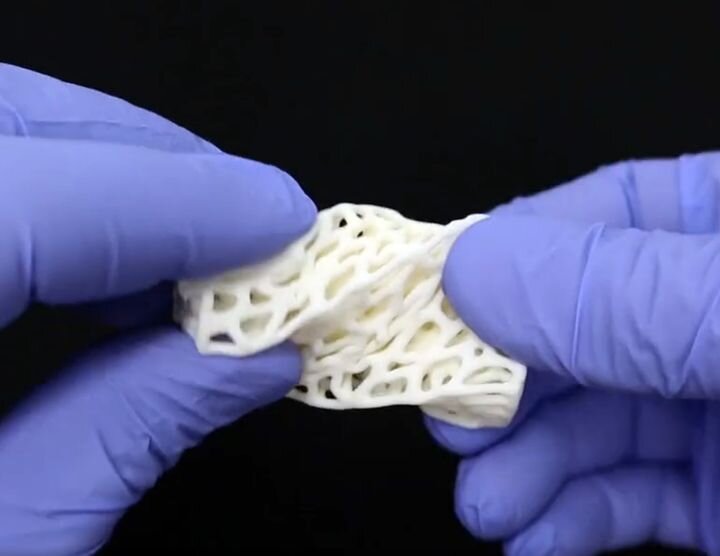![A flexible SLS 3D print [Source: Inkbit]](https://fabbaloo.com/wp-content/uploads/2020/05/image-asset_img_5eb050b2de758.jpg)
Boston-based Inkbit is developing an AI-based system to manage 3D print quality.
The company develops a multi-material jetting machine that seems somewhat reminiscent of Stratasys’ PolyJet approach, although I am sure there are differences. Typically you’d 3D print two materials, one being for the 3D model itself, and the other for dissolvable support material. It also seems possible that you can 3D print hard and soft materials on the Inkbit equipment.
But the trend these days is to ensure that any 3D prints are of the highest possible quality. Some 3D printer manufacturers are including, for example, vision-based systems that examine the state of each completed layer to ensure it matches what was expected, or at least within specified tolerances.
If a layer is detected to be out of tolerance, the 3D print job can be aborted and you’ll save a pile of cash on materials as well as shortening the re-run time.
However, Inkbit seems to be taking that concept a bit farther. Here’s how they explain their approach:
“We use a proprietary 3D scanning system to generate a topographical map of each layer after deposition. Any discrepancy from the expected geometry is corrected in subsequent layers. These data are also used to train a machine learning algorithm that enables our printer to learn the properties of each material and anticipate its behavior.
This ensures parts are built quickly and accurately, every time. Per-layer scanning also allows us to generate a full 3D reconstruction of each part as printed, providing a complete digital record of every print, ensuring 100% quality control on every part.”
Inkbit does use the layer imaging as other vendors do, but the interesting part is where they say, “Any discrepancy from the expected geometry is corrected in subsequent layers.”
If they can do this, then a job that might have been aborted on another system that merely looked at each layer’s quality could possibly run to a successful completion on Inkbit’s equipment.
That sounds like a very valuable capability, but how, exactly would one do this? I’m imagining I’m able to control the 3D printer with my mind as each layer proceeds: what steps would I take to “fix” the problem on subsequent layers?
This is quite puzzling. It’s likely there are some failure situations where you cannot do anything to recover the print, and you really must abort the job. But then there are probably countless different recoverable failure scenarios. Which one am I looking at? What trickery must be performed to recover for this particular error?
That seems like a very hard problem to solve.
Enter Inkbit’s AI-based system. They seem to have developed a system that can, through image analysis, recognize some quantity of failure scenarios and apply the corresponding adjustments on subsequent layers. This is something that would obviously have to be done in real time, so a system is required to do this.
Developing a system of this type would normally require a machine learning system to be exposed to a very large number of failure situations. Perhaps Inkbit “generated” them by introducing tiny flaws in the GCODE manually to see if the system detected and handled them properly.
This is a fascinating solution to the failure and reliability issues, but I’m wondering how this might fit within applications that require certified parts? Would their AI system’s solution be acceptable for certification authorities? How would you certify the AI solution without going through all possible failure modes?
Because of this, I suspect the Inkbit solution might be of more immediate interest to those 3D printing objects that don’t necessarily require certifications. And perhaps Inkbit is working on a way to achieve certifications.
However, investors believe Inkbit is quite a viable operation, as they have recently received a large US$12M investment round. Curiously, the investors include materials providers DSM and 3M, as well as Stratasys.
Via Inkbit

